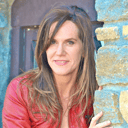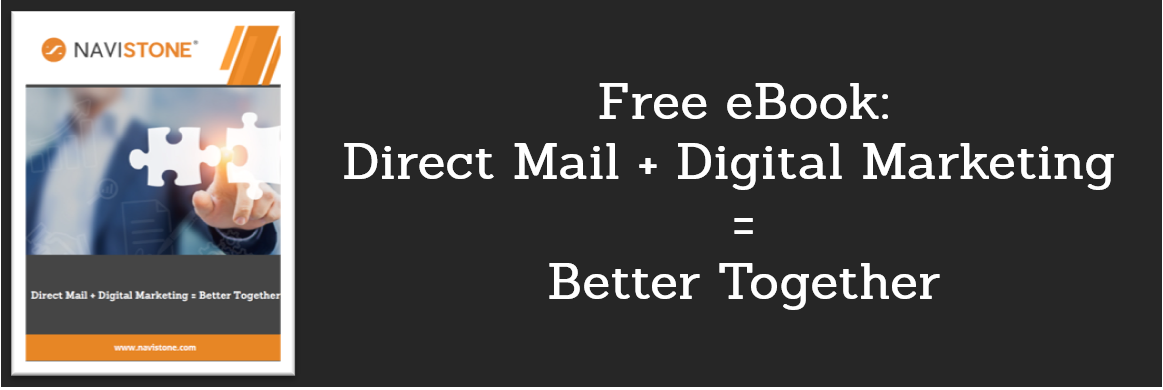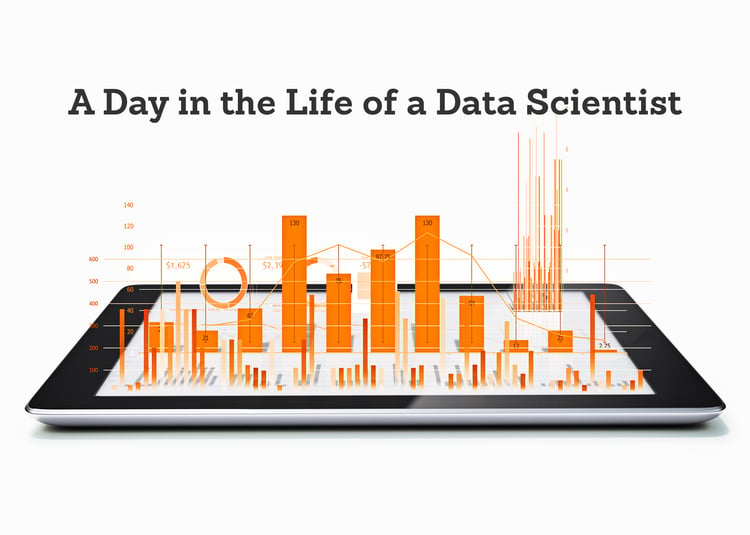This week's blog post is contributed by guest writer, Connie Vaughn, Director of Data Science for NaviStone. Connie has worked in data science and analytic marketing for over twenty years for a variety of agencies and client companies. Her favorite parts of data science are getting creative with data elements, using mathematics to simplify business problems, and creating data products that directly impact the business. She has degrees in math, psychology, business, and journalism, as well as a certificate in teaching English to speakers of other languages. She is getting ready to foster-to-adopt a teenager and hoping to give her first TEDx talk in the near future.
 A Day in the Life of a Data Scientist: Q&A with Connie Vaughn, Director of Data Science, NaviStone
A Day in the Life of a Data Scientist: Q&A with Connie Vaughn, Director of Data Science, NaviStone
Q: Connie, in a few sentences, can you sum up your experience as a Data Scientist prior to NaviStone?
The first decade or so of my career was spent moving between data management companies like Epsilon and Information Resources, and advertising agencies like DDB Needham and Rapp Collins. This was an excellent education in both state-of-the-art analytics and broad business acumen, and I got to see into the workings of an amazing range of A-list client companies. After that, I consulted to a couple of billion-dollar direct retailers, and then was hired to direct Data Science at NaviStone, a Midwest tech start-up in Cincinnati, so I’ve been fortunate to have quite a range of experience.
Q: The global management firm McKinsey & Company reported a projected shortage of 140,000 to 190,000 data scientists in 2018. This represents a 50-to-60% talent gap to meet projected demands. What do you think the biggest driver for this demand is?
Partially it’s because we are now glutted with data. But more than that, there is an executive perception that data is important in a way it wasn’t viewed before. As with most trends, this is a blend of both truth and hype. Google and Amazon (and many followers since) were leaders in creating successful businesses based on handling huge volumes of data with at least some rudimentary predictive algorithms. Online sales have now outstripped stores and Amazon Prime is eating everyone’s lunch. At the same time, on YouTube we can watch a robot learn to do backflips, and you can control your home appliances from work on your phone. That’s futuristic and sexy.
All businesses can, in principle, monetize their data. While data can be an enormous asset, figuring out how that monetization applies to an individual business model is tough. The demand for Data Scientists is partly driven by data and technology, but partly because of an employment market panic. We need strategists who understand the worth and use of data, as much or more than we need technical data scientists to create algorithmic solutions that may still be in search of a business problem.
Q: How have you seen this demand come about in your career?
Data science was first coined as an academic term in the early 2000's. I didn’t start hearing about it more frequently as a business term until maybe around 2012. Back in 2009, Google’s Chief Economist had predicted that the sexiest job of the future would be a Statistician – to much merriment and derision – but it’s already happened! I started my consulting business in the “Competing on Analytics” model and ended up labeled a Data Scientist with essentially the same skill set.
This has been great for those of us in this field in terms of both salary and prestige. But, as businesses panic to not be left behind, I’ve seen it open the door for kids with a few years of experience running tools they don’t really understand, to also get those enormous salaries. We’re already seeing a bit of an employment market adjustment, as an understanding of the role matures.
Q: Can you recall the moment you felt most inspired to pursue a career in Data Science?
I can recall two key moments. First, when I was in college at Miami, I was employed part-time in our mainframe computing center. I was speaking to the director of the center about how much I enjoyed working with both statistics and databases. “Go into direct marketing,” she suggested. “What, junk mail?” I scorned. “If it’s junk, it’s poorly targeted,” she countered. “That’s where you come in—you’re there to get the message to the person who wants it.” It changed my whole view of analytic marketing into something challenging, helpful, and appealing.
Later, I was in my very first corporate job with Information Resources for just four months when they hosted a day dedicated to introducing employees to different departments within the organization. I signed up for a session with Strategy having no real idea what that meant. The Vice President of Strategy himself spoke with our small group of beginners, and he outlined our market approach versus Nielsen, our main (and much larger) competitor—and I was hooked. I later got an MBA at the University of Chicago and held strategy positions in three different companies. This turn greatly informed my view of Data Science as a strategic, as well as, technical skill set.
Q. What are the biggest challenges Data Scientists are facing today?
With the initial hype about Data Science came an expectation that Data Scientists themselves be deeply skilled in more areas than is probably reasonable—from PhD-level mathematics to software engineering through UX, and to be business strategists and high-level communicators as well. It’s becoming more recognized that there are specializations within Data Science, and that you have to ask for the one(s) you need when hiring. Similarly, the terminology of Machine Learning and Artificial Intelligence has led managers to have science-fiction expectations of how these tools work and what they can do.
For all of us in this field, however, it is necessary to know something of all the specializations. Tools change rapidly and lifelong continuing education is a must. Statisticians shifted from overwhelmingly favoring corporate SAS to moving toward open-source R, and then Python within just the last few years. New tools for data processing come out constantly. Terminology changed when algorithmic approaches entered the field to complement traditional statistical knowledge. Managers remain hands-on in order to usefully mentor direct reports, and no one can afford to put their coding days behind them.
Q: What’s the most innovative thing you’re seeing in how marketers are using data today?
Marketers today are able to gather and model real-time intent data. This differs drastically from only having customers’ past purchase behavior and demographics to model. Today’s marketers are able to track online behaviors prior to purchase and figure out what the customer is searching for and intending to buy in the near future. They can then intervene in the customer’s decision-making process with a timely, personalized communication.
Going even further, marketers are starting to marry online and offline marketing to work together at the level of the customer and not just the campaign. New technologies for identifying online browsers in an anonymized, privacy-compliant manner allow aggregation of knowledge across channels. One example I have been seeing has allowed marketers to expand the reach (up to 70%) of their personalized targeting programs, by sending direct mail to profitably retarget online browsers who abandoned the website but show strong intent to purchase.
Q: If you had a list of “best-kept-secrets” (websites, books, coaches) you’d recommend, which would you recommend?
Not sure if I have secrets! I use stackoverflow constantly to help me with my code! McKinsey, which you quoted earlier, has excellent articles on Data Science from the executive perspective. Edward Tufte, the “Visual Display of Quantitative Information” guy, has been around since long before today’s software. I took his one-day class and he has some interesting things to say!
I would also say that Data Science is a field that is interdisciplinary in nature, and benefits from hooks to many other fields. I used to wonder why journalists were confined to reporting on academic research instead of doing their own original analysis. Now there is a field that does just that—data journalism! I interned at a newspaper as a mid-career professional, providing analysis as well as storytelling. I would highly recommend pursuing your side interests in related areas. It will give you fresh ideas that aren’t the same thing everyone else is already saying. Journalism, for example, uses some interesting visualization tools that create publication-worth graphics that could be of great use to Data Scientists.
Q: If you could give one piece of advice to men and women who are currently considering entering the field of Data Science, what would it be?
There are three areas I see lacking when I’m looking to hire.
First, a strong background in basic higher mathematics. Too many aspiring Data Scientists believe the software will do the thinking for them. A solid two years’ college math sequence and one to two years’ statistics sequence will help you stand head and shoulders above those candidates. Even if you’ve already graduated, I would go back and get this.
Second, passion for business pace and operations, in contrast to a more academic view of Data Science. It is important to understand the outcome as monetization as opposed to pure R&D. Sometimes the simplest analysis is the most impactful. Data Scientists who are looking mainly to scratch an intellectual itch not related to business operations are not always the best or happiest business candidates.
Finally, creativity with data itself. Less experienced Data Scientists often believe the power of an analysis is in choosing the tool or technique—whereas the biggest bang for the buck really comes from sourcing and creating data elements. Recognizing and measuring a key business driver is usually far more important than the small difference between using, say, a regression model or a neural net.


Lookalike Audiences Enhance customer acquisition by identifying high-potential prospects, boosting response rates, and lowering advertising costs.
Retargeting Postcards Double the performance of your direct mail retargeting.
Amplify Recognize unknown visitors who are actually customers. Add 20-40% to your ESP/CRM campaigns.
IQ Mail Retain customers with personalized, timely messages for those opting out of digital channels.


 A Day in the Life of a Data Scientist: Q&A with Connie Vaughn, Director of Data Science, NaviStone
A Day in the Life of a Data Scientist: Q&A with Connie Vaughn, Director of Data Science, NaviStone



Comments